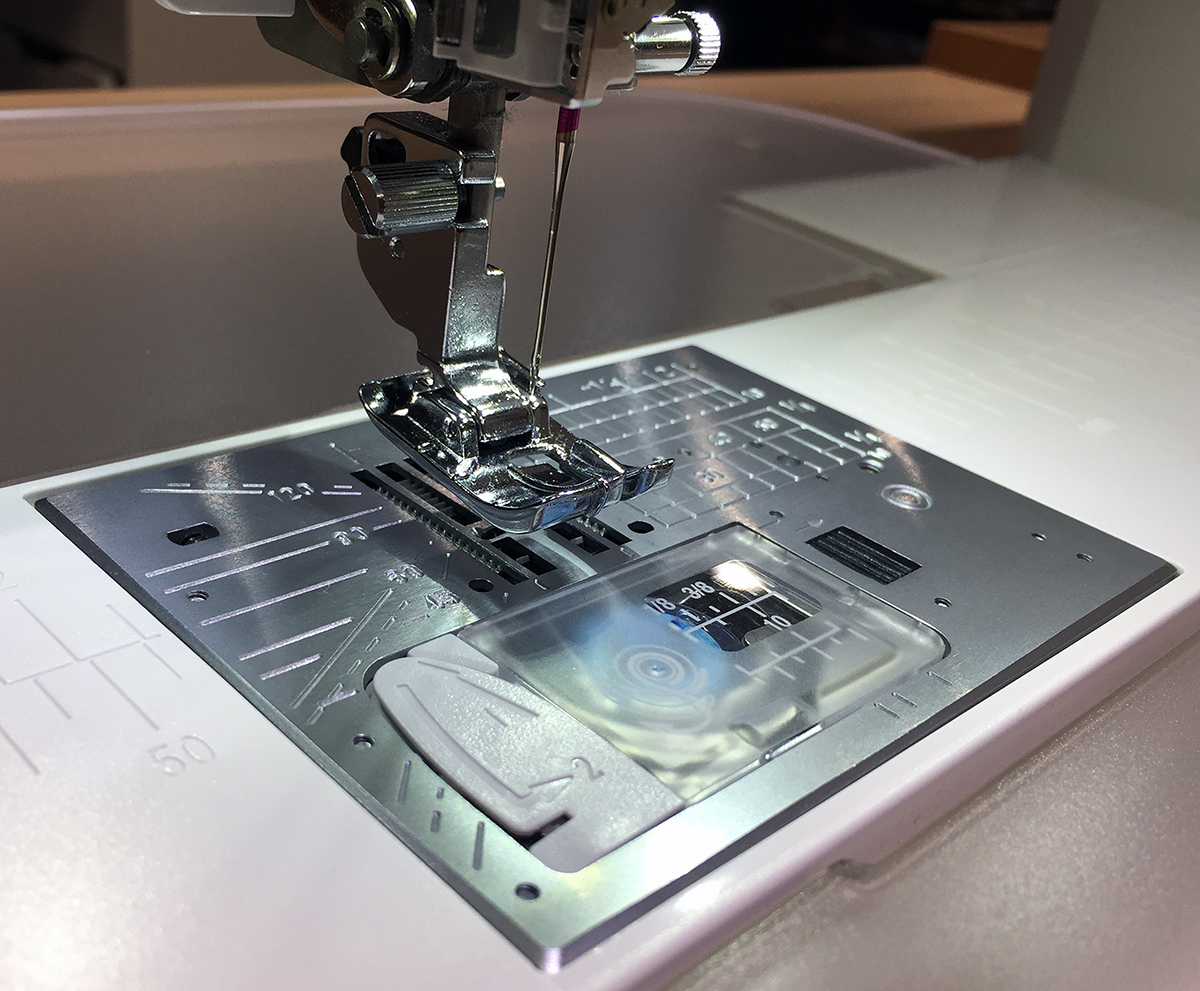This is the last blogpost in my series about the new feet included in the Accessory Upgrade Kit for the Janome MC9400. Just because it is the last blogpost does not mean that the foot I’m going to tell you about is the least of the feet included in the kit. If you aren’t familiar with the Accessory Upgrade Kit and what is included in it, click here.
For most quilters, stitching a perfect ¼” seam is a constant struggle and any help we can get to achieve this is most appreciated. One of the feet included in the Accessory Upgrade Kit for the Janome MC9400 will definitely help you stitch that perfect ¼” seam. It is the O foot or ¼” seam foot without guide. Let’s take a closer look at this foot.
If you are thinking that you may already have an O foot in your Janome MC9400 accessory storage box, you’re right! There is, however, a significant difference between that foot and the new O foot: the new O foot doesn’t have a guide on it. The black metal piece that is on the right side of the foot when viewing it on your machine has now been removed. This guide is helpful for running along the edge of your fabric when stitching a ¼” seam. While I like this foot, I sometimes find that the metal piece can catch on loose threads and cause issues if I’m not watching carefully. You won’t have this problem with the new O foot as the black metal guide has been removed.
There are some other helpful features on the new O foot that I know you’re going to like. You will notice that there are some additional markings on this foot. There is a raised metal piece that extends to the edge of the front of the foot and this is ¼” away from the needle drop position. While this sounds complicated, what it really means is that you can use this guide to stitch another line ¼” away from a previously stitched line.
There are also three ¼” markings on the left side of the foot and these can be used in different situations, such as when you are at a corner and want to stop ¼” away from it to turn your fabric – or ½” or ¾” inch.
If you’ve been using your original O foot on your Janome MC9400 and wishing that it didn’t have the metal guide on it, you’ll appreciate the new O foot without the guide as well as the additional markings on the foot.
For more information on the O foot and to see it in action, click on the image below.
Creatively,
P.S. Did you know that you can sign up to receive FREE emails full of quilting goodness? Just click here to receive FREE content directly in your email inbox every few weeks from Chatterbox Quilts. I know you'll be glad you did!




















